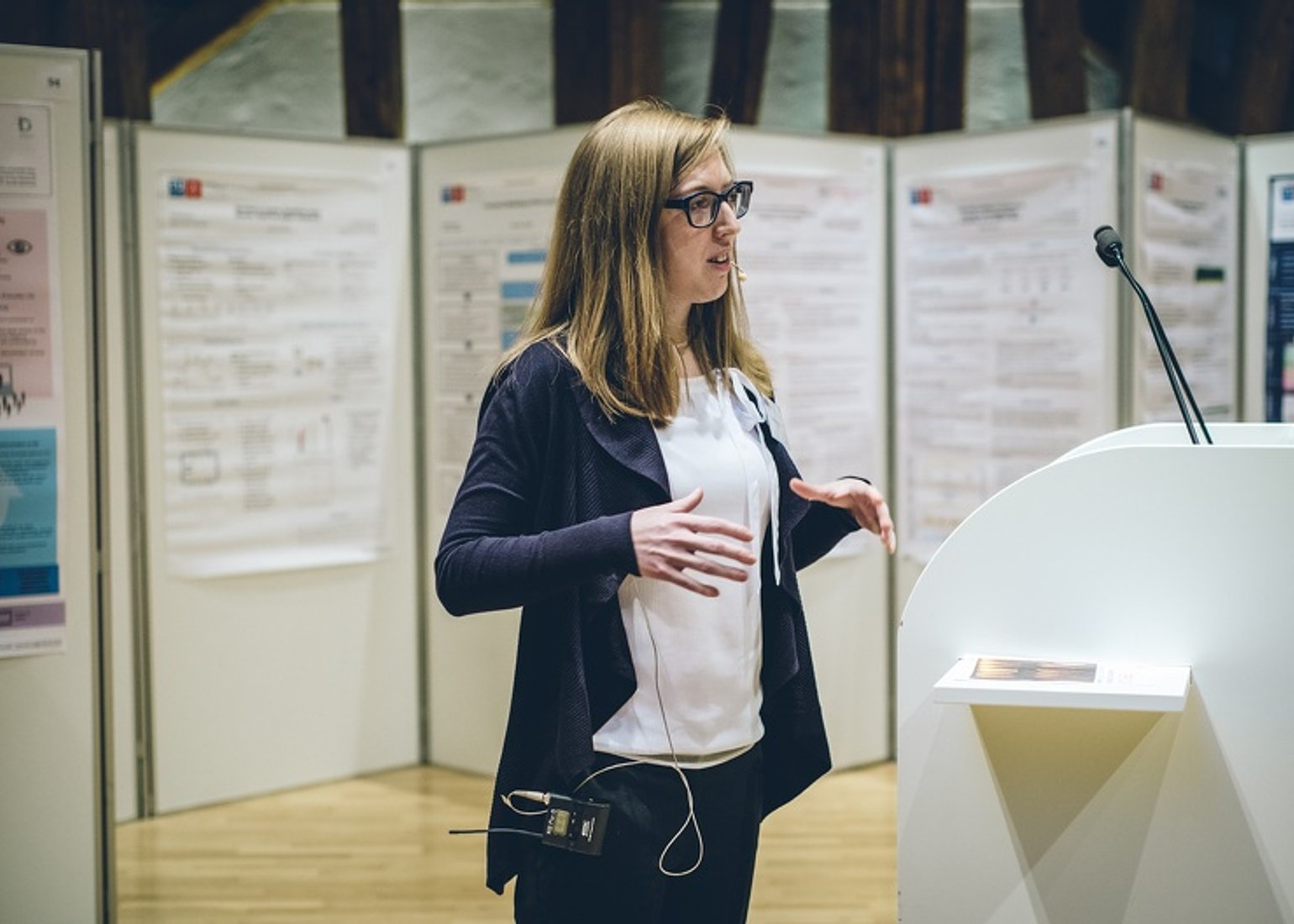#5QW: Katinka Böhm
Despite her disappointing experience with her first Informatics course at school, Katinka got curious to learn more about computers and coding.

Picture: Amélie Chapalain / TU Wien Informatics
About
Katinka Böhm received the Distinguished Young Alumn Award for her diploma thesis on “Semi-Automatic Engineering of Topic Ontologies from a Common-Sense Knowledge Graph” in 2019. She now works as a researcher and developer at webLyzard technology. What she likes about her job is the mix of research and business, allowing her to deal with her favorite topics of Semantic Knowledge Bases and ontologies, Linked Open Data, and Natural Language Processing.
How did you get in touch with Informatics?
It was pretty late in my school career since my parents were not very involved in science and technology education and focussed more on general knowledge. Apart from that, I was in a language branch in high school. My first contact with Computer Science was when we became a laptop class. I was one of the few people who were interested in learning more about computers, and I was pretty disappointed when I realized how bad our Informatics course was and how little knowledge the teachers had. I was excited to learn about programming and how computers worked, but then the class started with “this is a mouse and this is a keyboard”—very disappointing. That was my first encounter with Informatics, and I got interested in learning more, I got curious. I was about 16 by the time. Because of my limited experience in Informatics in comparison to people from an HTL, I decided to start studying technical mathematics and did not go directly into the field of Informatics. During my Bachelor Studies, I realized that programming classes and algorithms were my favorite subjects. Then I got the opportunity to take part in the Vienna Summer of Logic, and it was a gradual finding until I took my Masters in Informatics.
What makes Informatics so fascinating for you?
There is still so much to discover: There is never one correct solution, but there are always multiple possibilities to reach your goal. You can try out, optimize, and find the best solutions for your application and use case. In the field of Theoretical Informatics, there are still a lot of open questions that are relevant to many different areas in practice.
Which talents should people bring along for a career in Informatics?
Many people think Computer Science is too difficult to tackle and don’t give it a try. So curiosity, interest in critical thinking, and enjoying problem-solving are essential.
Why do you think there are still so few women in Informatics?
In mathematics, the relation was almost 50:50. Maybe there is still the barrier that women think Informatics is not suitable or exciting enough. I believe that if girls got introduced to Informatics early on, the discrepancy should get better gradually. In my case, the school was the starting point—although not in the best way, since the course I had to take was outdated and simple, but at least it made me curious, and I continued with Computer Science.
Where do you see the connection between your research and everyday life?
During my year abroad in Hamburg, I got in touch with my Master’s topic, the knowledge graphs. At the university there, they had a project with a childlike robot that was supposed to learn things similar to how a human learns. The research was based on cognitive science, and neural networks were applied to induce embodied learning in a child-like robot. The robot learns by interacting with everyday objects like an apple and discovers properties through haptics and sensing. The central concept was based on a mother-child teacher model in which the mother introduces additional knowledge that was used in these scenarios and established conceptual databases and applications that could help machines understand everyday concepts.
Interview: Claudia Vitt, 2019
Discover the whole #5QW series.
Curious about our other news? Subscribe to our news feed, calendar, or newsletter, or follow us on social media.
